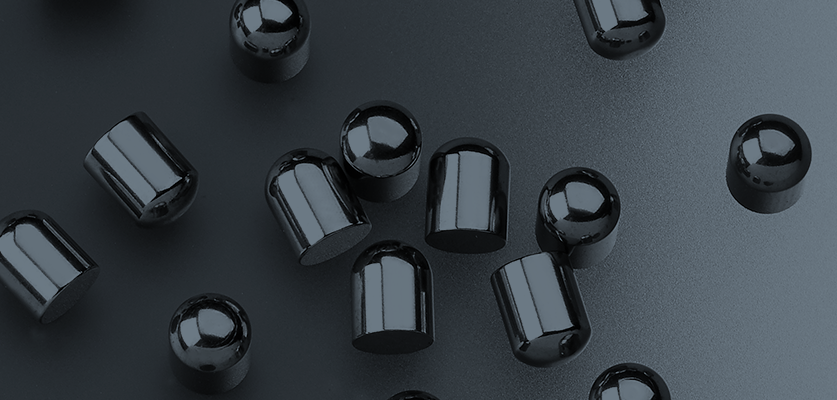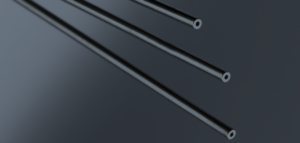How Tungsten Is Unique, from Its Name to Its Melting Point
With Metal Cutting’s long history of supplying pure tungsten and manufacturing metal parts from this remarkable material, we’ve developed a special appreciation for the element, its properties, and what it can do.
So just for fun, we thought we’d take a look at some of the more interesting — and sometimes curious — facts about tungsten.
1. What’s in a name?
The derivation of the name “tungsten” — and the story of why the element’s symbol on the periodic table is W — is an international puzzle. The element itself was discovered back in 1783 by two Spanish chemists, brothers Juan José and Fausto Elhuyar, in samples of a mineral called wolframite.
Today, in many countries around the world, tungsten is referred to by the Germanic name “wolfram,” after the mineral wolframite. So, it’s easy to see where the chemical symbol W came from — although if you’re like us, you might wonder why the element wasn’t named “Faustonite” or if there is a Spanish word for wolframite.
However, the name tungsten is what is used today in the U.S. and in English, French, and various other languages. This term came from the Swedish words tung and sten, meaning “heavy stone,” and is the old Swedish name for the mineral scheelite, another source of tungsten ore.
But ironically, tungsten is NOT used as the name of the element in Sweden or the other Nordic countries. There, as well as in most Germanic and Slavic languages, they use the name wolfram or volfram.
Tungsten/Wolfram/Volfram is still extracted primarily from wolframite and scheelite. Of all metals in pure form, tungsten has:
- The highest melting point (6192°F, or 3422°C)
- Lowest vapor pressure (at temperatures above 3000°F, or 1650°C)
- The highest tensile strength
So, whether you call it tungsten or any other name, this range of properties means tungsten is used in many industries and products around the world, from high-speed cutting tools and jet turbine engines, to ammunition, lighting, and even fishing weights.
2. Tungsten wire diameter is expressed in milligrams.
You might hear people describe tungsten diameter as 14.7 mg, 3.05 mg, 246.7 mg, and so on.
That’s because in the old days, lacking tools for accurately measuring very thin wires — say, from .001” up to .020” in diameter — the convention was to take 200 mm (about 8”) of tungsten wire, weigh it, and plug the weight into a mathematical formula to determine the diameter.
To calculate the diameter (D) of tungsten wire based on the weight per unit length, the formula is:
D = 0.71746 x square root (mg weight/200 mm length)
The standard diameter tolerance is ± 3% of the weight measurement, although tighter tolerances are available, depending on the application for the wire product. This method also assumes the wire has a constant diameter, with no significant variation, necking down, or other conical effects anywhere on the diameter.
3. Most tungsten wire comes doped — whether you need it that way or not!
Once again, the practice goes back to the old days — specifically, a time when the main purpose of tungsten wire was in filaments for light bulbs. The trouble was, light bulbs throw off white-hot temperatures that caused early filaments to sag, leading to lamp failure.
Through experimentation, the idea evolved to add alumina, silica, and potassium to alter the mechanical properties of the tungsten wire. The dopants were added at the powder mixing stage.
Interestingly, in the process of hot swaging and hot drawing the tungsten wire, the alumina and silica would out-gas and the potassium would remain. This element gave the wire non-sag properties under white-hot temperatures.
Adding these dopants at the powder mixing stage of tungsten wire manufacturing dates to the time when there were no other significant uses for the wire besides light bulb filaments. While there are many other uses of tungsten wire today — and while incandescent light bulbs are becoming a thing of the past — the use of dopants in tungsten wire manufacturing continues.
However, Metal Cutting also offers 99.999% pure, undoped tungsten wire, in case you want it!
4. Tungsten and tungsten carbide are NOT interchangeable.
Tungsten carbide is famous for its wear resistance; in fact, it can only be cut using diamond tools. But while tungsten carbide does have a lot of tungsten in it, the common practice of adding cobalt as a binder makes it a cemented carbide and gives tungsten carbide properties that are very different from those of pure tungsten.
(There are binderless carbides, with their chemical resistance advantages, but that is a subject for another blog.)
Pure tungsten has many properties that make it useful; however, it is also known for being notoriously difficult to machine. Try to use diamond tools, and pure tungsten will simply load, or “gum up,” the diamond wheel.
Metal Cutting specializes in methods that are very effective for cutting pure tungsten, but interestingly, those same methods are not useful when trying to cut tungsten carbide. For example, a customer may tell us they have or want a tungsten tube, but upon further investigation we may find out they actually have or need tungsten carbide in the form of a tube.
Pure tungsten simply cannot be made into a tube, aside from gun drilling final sizes — and that assumes the part has a favorable length to ID ratio. It also assumes the customer has lots of money and doesn’t want a lot of these painstakingly produced parts.
Tungsten carbide, on the other hand, can be pressed and sintered into tubular shapes, but that, too, is not a cheap or high-volume process. And unlike other metals, neither tungsten nor tungsten carbide can be drawn into tubes.
5. The high melting point of tungsten makes getting liquid tungsten a challenge.
People sometimes ask if you can have liquid tungsten, and the answer is … well, it’s complicated. Having the highest melting point of any known metal, at 6192°F, obviously tungsten would be very difficult to melt.
In theory, anything can be melted if you apply enough heat. However, for commercial purposes, the high tungsten melting point makes liquid tungsten a virtually impossible proposition.
The problem is simply, what type of container would hold a large amount of liquid tungsten? In all practicality, anything you’d try to use would be melted by the high temperature of the tungsten.
That is why tungsten is manufactured in a non-liquid state, using powder metallurgy. Commercially, tungsten products — from pure tungsten to the few alloys that are possible, such as heavy alloys, copper tungsten, and silver tungsten — are made through pressing and sintering into near net shape.
For wrought products, the pressing and sintering is followed by swaging and repeated drawing and annealing. This produces the characteristic elongated grain structure that carries over to the finished product, whether it is a large rod or a very thin wire.
The only known element with a higher melting point than tungsten is carbon, at 6422°F (3550°C). However, even carbon cannot be used to hold liquid tungsten, because at high temperatures the two will react to form tungsten carbide.
Experimentally, liquid tungsten has been produced using super-conductive copper crucibles in which the heat is pulled away from the surface of the crucible so that it remains intact. But again, this is impractical for commercial volumes.
That means every tungsten product ever produced was never in a liquid state. Metallurgically, that is of crucial importance to everything that comes afterwards.
How do facts 1-5 add up?
With all of its unique and interesting properties, tungsten is one of the most widely used of the refractory metals. (And no, it is not a rare earth element, even though for political reasons tungsten has been grouped with those elements that make the headlines — but that is a topic for another time.)
As a company that has been delivering specialized tungsten wire and rod products since 1967 — and as the exclusive North American distributor for Nippon Tungsten Co., Ltd. — Metal Cutting Corporation can help you untangle the mysteries of tungsten for your applications.
Just give us a call. Or, for tips on tungsten wire or other precision metal fabrication needs, download our free guide to tungsten wire properties and applications.






